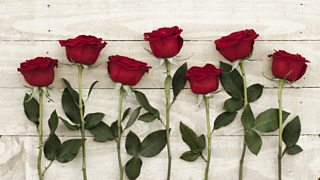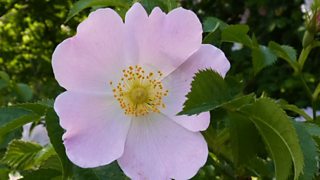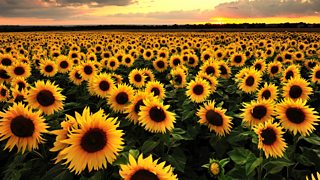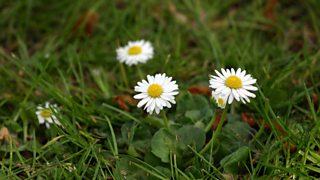Coming up roses: the meaning of flowers
As summer’s leaves begin to fall, it’s time to start thinking about planting next year’s blooms – and a new series from The Essay on provides the perfect audio accompaniment.
Here are seven charming facts it taught us about roses... and romance.

1. Roses have been around for a long time – so long, in fact, that their name is one of the few words that is the same in both Latinate and Germanic languages.
2. Roses have the headiest scent of all flowers. They’ve been used to make perfumes and other beauty products for thousands of years: the rosewater used to make such products is from damask roses, which grow in Bulgaria, Russia, the Middle East and as far away as India and China.
3. Another rose product, rose oil, is especially valuable. Thousands of hand-harvested rose petals are needed to produce it: 20,000 kilos of petals per kilo of oil. So valuable is the oil in its refined form that after World War One, the Bulgarian government commandeered the entire national crop in order to pay for essential supplies.
4. Feeling peckish? Rose petals are a particularly popular ingredient in Middle Eastern dishes, from Iranian stews to Turkish delight – but they’re just as delicious crushed and boiled to make jam, or eaten with butter in a sandwich. Don’t knock it until you’ve tried it.
Roses contain phenethylamine – a mood-enhancing compound also produced by people in love...
5. Roses have potent symbolic value in many cultures and traditions. While the knights of medieval romance blustered around in rose gardens, Botticelli painted Venus emerging from the sea, naked but for strategically painted roses falling from above. In Christianity, the rose is a traditional symbol of the Virgin Mary – the embodiment of pure love and devotion.
6. The colour of roses has particular significance in the United Kingdom. Remember the Wars of the Roses? Henry VII’s red-and-white Tudor Rose eventually united the houses of York (red) and Lancaster (white) in 1486, ending 32 years of civil war. Two generations later, Elizabeth I went one step further by choosing the blended pink eglantyne rose as her personal symbol. Meanwhile, rosa alba – the wild white rose – is an important symbol north of the border, where historically it was worn as a secret Jacobite symbol.
7. Nowadays we tend to associate roses – especially red ones in bunches of 12 – with love and romance. Apart from the scent, there’s another reason that they may appeal particularly to lovers. Distilled roses contain abundant supplies of mood-enhancing phenethylamine, a compound that slows the breakdown of beta-endorphins. It’s also produced by people in love…
Fiona Stafford's are available on Radio 3 and online for 30 days.





